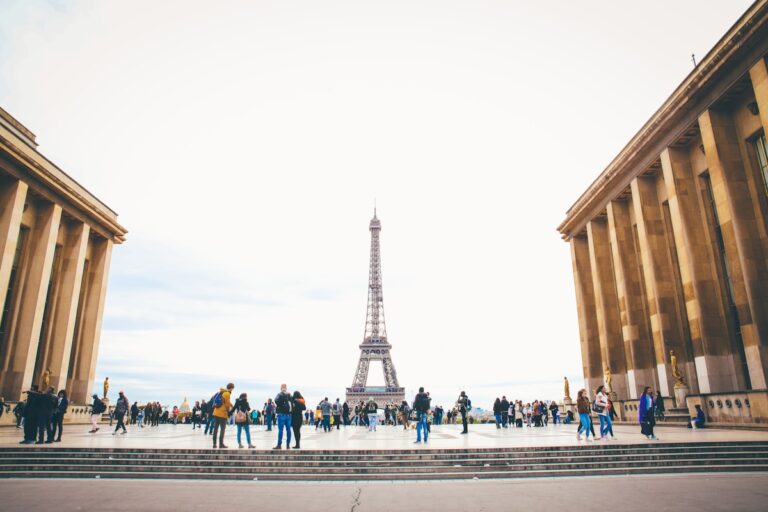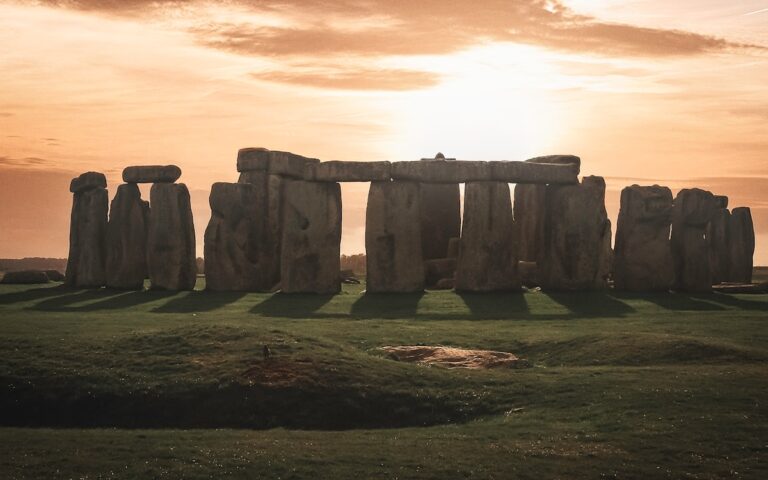Paris Neighborhoods: A Comprehensive Guide to Exploring Paris Arrondissements
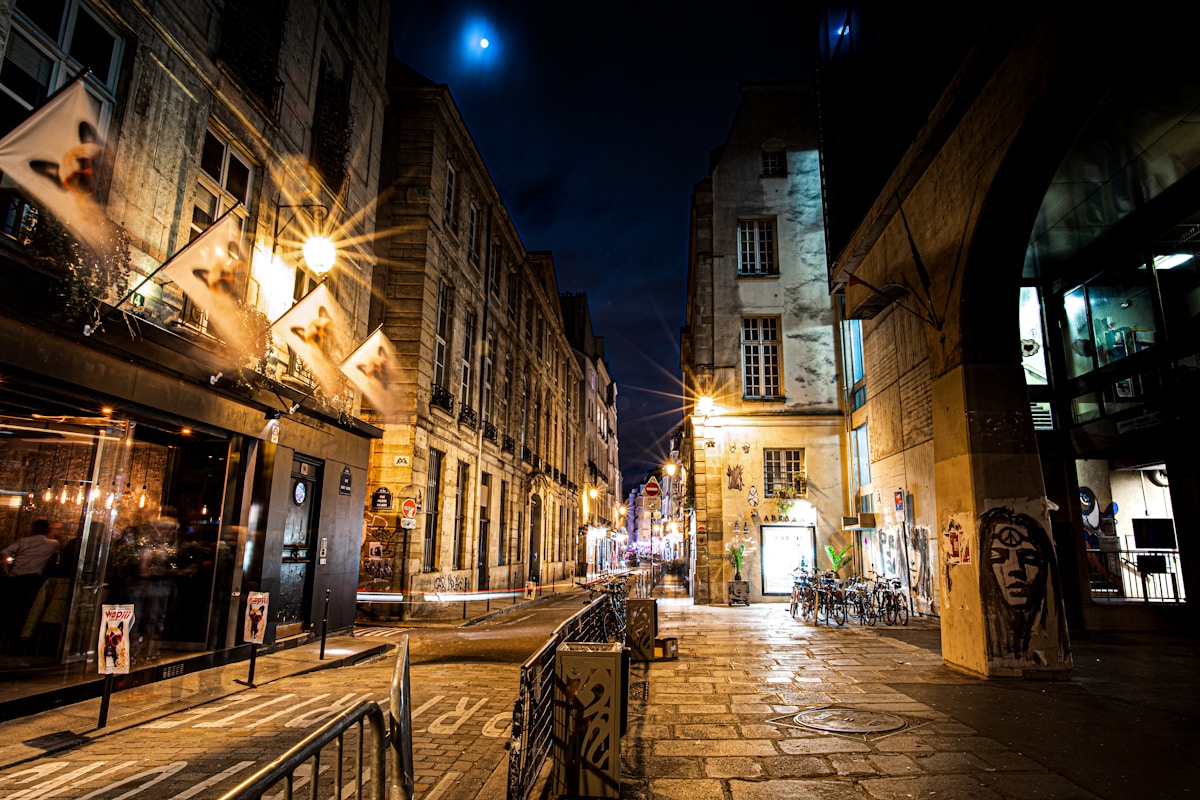
Paris, often hailed as the City of Light, is a mosaic of 20 distinctive arrondissements, each offering its own unique blend of history, culture, and charm.
- Exploring Paris Arrondissements: A Comprehensive Guide to the City's Neighborhoods
- Understanding Paris Arrondissements
- Central Paris Arrondissements / Paris Neighborhoods
- Left Bank Arrondissements
- Paris Neighborhoods: Right Bank Arrondissements
- Paris Neighborhoods: Eastern Arrondissements
- Paris Neighborhoods: Western Arrondissements
- Exploring the Charm of Parisian Districts
From the bohemian spirit of Montmartre to the sophisticated ambiance of Saint-Germain-des-Prés, these neighborhoods collectively tell the rich and intricate story of Parisian life.
As we navigate through the intellectual allure of the Left Bank and the luxurious attractions of the Right Bank, the true essence of Paris gradually unfolds.
To truly appreciate the city’s multifaceted character, one must explore the hidden gems and renowned landmarks found in each arrondissement.
The Essential Guide to Paris Neighborhoods: Key Takeaways
Hide- Paris is divided into administrative zones called arrondissements, sometimes referred to as the "twenty small cities of Paris", each with a distinct personality and its own town hall 🗺️
- The Seine River divides Paris into two halves: the Right Bank (Rive Droite) and the Left Bank (Rive Gauche) 🌉
- The numbering of the arrondissements starts in the center of the city and proceeds in a clockwise spiral out to 20 🔢
- The original 20 arrondissements have been consolidated into 17 administrative districts, with the four smallest-numbered arrondissements now forming Paris Central 🗼️
- The Louvre and its surrounding neighborhoods (1st and 2nd Arrondissements) are the oldest and smallest in Paris, with popular local districts like Rue Montorgueil and Saint-Eustache 🏛️
- The Marais district (3rd and 4th Arrondissements) is a popular destination for travelers, known for its narrow, ancient roads and tilting buildings 🏙️
- The two islands of Paris — Île de la Cité and Île St. Louis — are found in the middle of Paris in the 1st and 4th Arrondissements, home to Notre Dame Cathedral 🌊
- The Latin Quarter, Sorbonne, and Saint-Germain-des-Prés are located in the 5th and 6th Arrondissements on the Left Bank 📚
- The 7th Arrondissement is home to the Eiffel Tower, Rue Cler, and the d'Orsay Museum, and is a wealthy Paris neighborhood with charming hotels and bistros 🗼️
- The 8th Arrondissement is famous for Champs Elysées and world-class hotels like the Four Seasons George V and the Plaza Athenée 🏨
- The 9th Arrondissement is known for the Grand Magasins — Printemps and Galeries Lafayette department stores — and the Palais Garnier Opera House 🛍️
- The 10th, 11th, and 12th Arrondissements are up-and-coming neighborhoods with trendy restaurants and cafés, but are often overlooked by travelers 🎨
- The 13th, 14th, and 15th Arrondissements are located in the southern part of Paris, with the 15th Arrondissement holding onto its authentic roots 🍞
- The 16th and 17th Arrondissements are the largest and wealthiest, with the Passy neighborhood of the 16th Arrondissement being a desirable place to stay 🏠
- The 18th Arrondissement is home to Montmartre, a charming area to stay with a bohemian vibe, and the Basilica Sacré Coeur 🎨
- The 19th and 20th Arrondissements are located on the outskirts of central Paris, with the neighborhood of Belleville being a bit out of the way but worth a visit 🎤
- Paris is divided into 20 unique arrondissements, each with distinct cultural and historical experiences.
- The Seine River splits Paris into the Left Bank (artistic) and Right Bank (luxurious).
- Central Paris includes the historic Marais District, the Louvre, and Notre-Dame Cathedral.
- The Left Bank features the Latin Quarter, Sorbonne University, and the Eiffel Tower.
As part of our Paris travel guide, in this article, we will introduce you to Paris neighborhoods so whenever you visit Paris, especially when visiting Paris for the first time, you will have a comprehensive guide regarding the Paris neighborhoods which you can keep to make your visit much more enjoyable.
Exploring Paris Arrondissements: A Comprehensive Guide to the City’s Neighborhoods
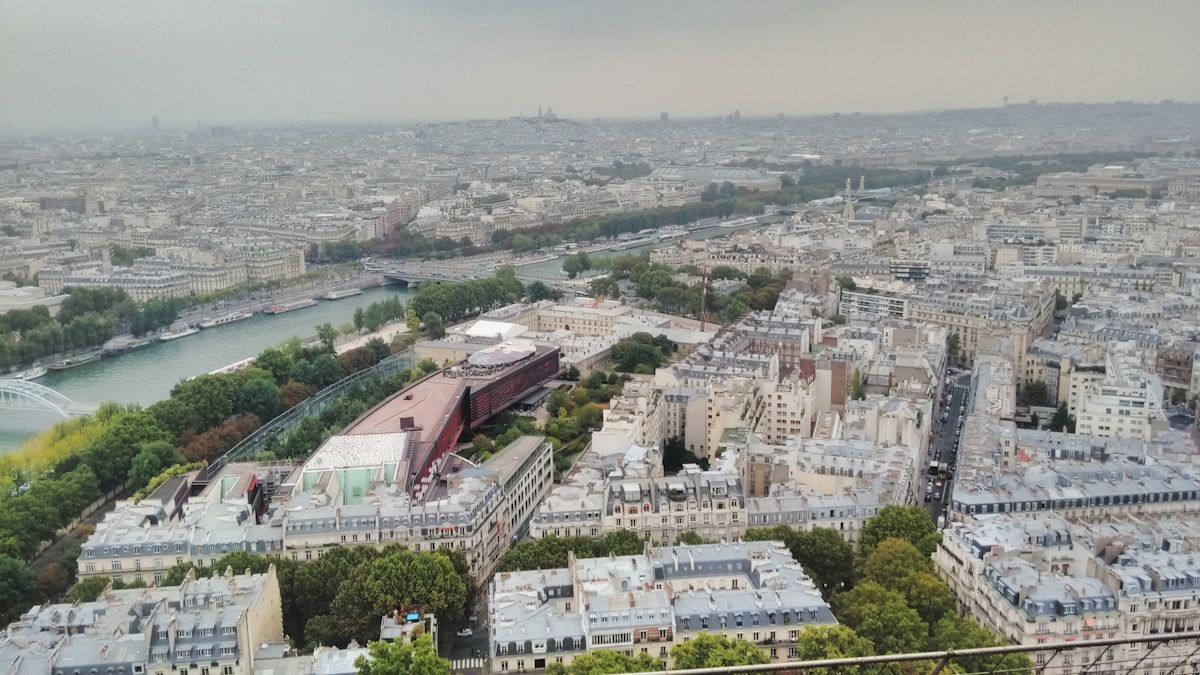
Paris, a city renowned for its rich history and vibrant culture, is intricately divided into 20 distinct arrondissements, each offering a unique glimpse into the city’s diverse character.
These Paris neighborhoods, also known as districts, form a mosaic of experiences that cater to various tastes and interests. From the bohemian charm of Montmartre in the 18th arrondissement to the historical depth of Le Marais in the 4th, each Paris district has its own story to tell.
Get better ideas on things to do, where to go, or where to eat with our AI Nearby Trip Ideas tool for free.
Exploring the best neighborhoods in Paris requires an understanding of what each arrondissement brings to the table. The Latin Quarter in the 5th arrondissement, with its intellectual atmosphere and centuries-old universities, contrasts sharply with the haute couture elegance of the 8th, home to the Champs-Élysées and luxury boutiques.
The vibrant multiculturalism of Belleville in the 20th adds yet another layer to the city’s rich tapestry.
A thorough Paris neighborhood guide can help visitors navigate these diverse districts, ensuring they experience the full breadth of what the city has to offer.
Whether you seek artistic inspiration, historical exploration, or culinary adventures, the neighborhoods in Paris promise an unforgettable journey through its multifaceted urban landscape.
Understanding Paris Arrondissements
Understanding the arrondissements of Paris begins with recognizing the central role of the Seine River, which bisects the city into the Left and Right Banks.
Each arrondissement, numbered from 1 to 20, spirals outwards in a clockwise direction from the historic center.
This unique layout not only defines the city’s geography but also influences its cultural and social dynamics.
Learning the Geography of Paris: The Seine River and Beyond

Understanding Paris’s geography begins with the Seine River, which elegantly splits the city into the bustling Right Bank (Rive Droite) and the more bohemian Left Bank (Rive Gauche).
This natural division is accentuated by the city’s unique spiral arrondissement numbering system, starting from the historic heart and spiraling outward.
Grasping these foundational elements provides essential insight into the character and layout of Paris’s diverse neighborhoods.
The Right Bank (Rive Droite) and the Left Bank (Rive Gauche)
The Seine River, a defining geographical feature of Paris, elegantly divides the city into the Right Bank (Rive Droite) and the Left Bank (Rive Gauche), each with its own distinct character and charm.
The right bank often features some of the best neighborhoods Paris has to offer, while the left bank is known for its artistic flair, making the arrondissements in Paris diverse and enchanting.
The Spiral Arrondissement Numbering System
Maneuvering the arrondissements of Paris becomes an intriguing adventure when one understands the city’s unique spiral numbering system, which begins in the heart of the city and winds outward like a snail’s shell.
This methodical layout helps explorers easily navigate the 20 districts in Paris, each paris neighborhood offering a distinct flavor and history, enriching the overall area of Paris with its diverse arrondissements.
Central Paris Arrondissements / Paris Neighborhoods
Central Paris Arrondissements offer a fascinating glimpse into the heart of the city, beginning with the 1st and 2nd Arrondissements, which are known for their historical significance and compact size.
Moving on, the 3rd and 4th Arrondissements encompass the vibrant Marais District and the iconic Île de la Cité, home to the Notre-Dame Cathedral.
Each area presents a unique blend of cultural landmarks, architectural marvels, and rich history that captures the essence of Parisian charm.
1st and 2nd Arrondissements: The Oldest and Smallest Neighborhoods
The 1st and 2nd Arrondissements of Paris, despite their modest size, are teeming with historical and cultural landmarks.
Home to the iconic Louvre, the bustling Rue Montorgueil, the majestic Saint-Eustache Church, and the dynamic Financial District, these neighborhoods offer a rich tapestry of Parisian life.
As you wander through these central arrondissements, you will encounter a blend of ancient architecture, vibrant street markets, and modern business hubs.
The Louvre and Surrounding Quartiers
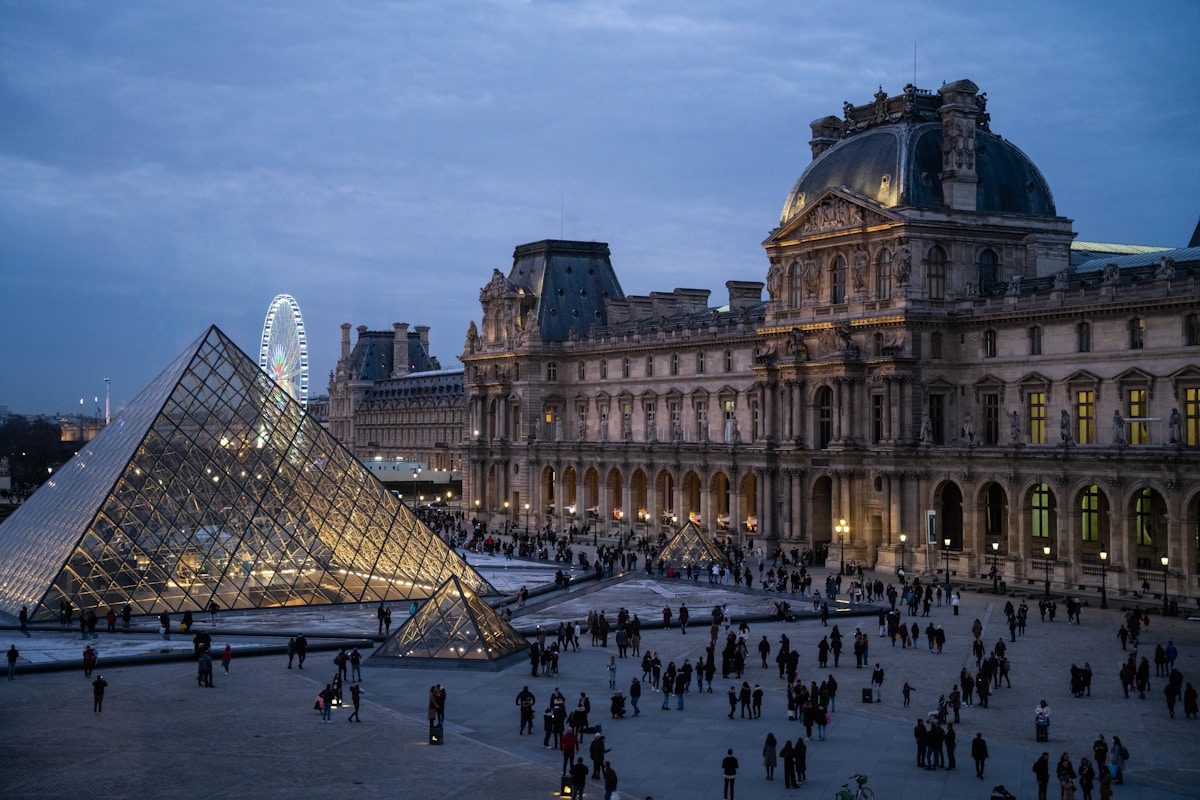
Nestled in the very heart of Paris, the 1st and 2nd arrondissements encapsulate a rich tapestry of history, art, and culture, with the iconic Louvre Museum standing as their crowning jewel.
Renowned as one of the best places to visit in Paris, this area offers an array of sights to see, making it an essential destination for those exploring the finest areas of Paris.
Rue Montorgreuil, Saint-Eustache, and the Financial District
Wandering through the vibrant Rue Montorgueil offers an immersive experience into the culinary and cultural heartbeat of Paris, while the majestic Saint-Eustache Church and the bustling Financial District reveal the historical and modern facets of the 1st and 2nd arrondissements.
Discover:
- Rue Montorgueil: Bustling market street.
- Saint-Eustache: Architectural marvel.
- Financial District: Modern hustle.
- Hidden gems: Quaint cafés and boutiques.
3rd and 4th Arrondissements: The Marais District and Île de la Cité
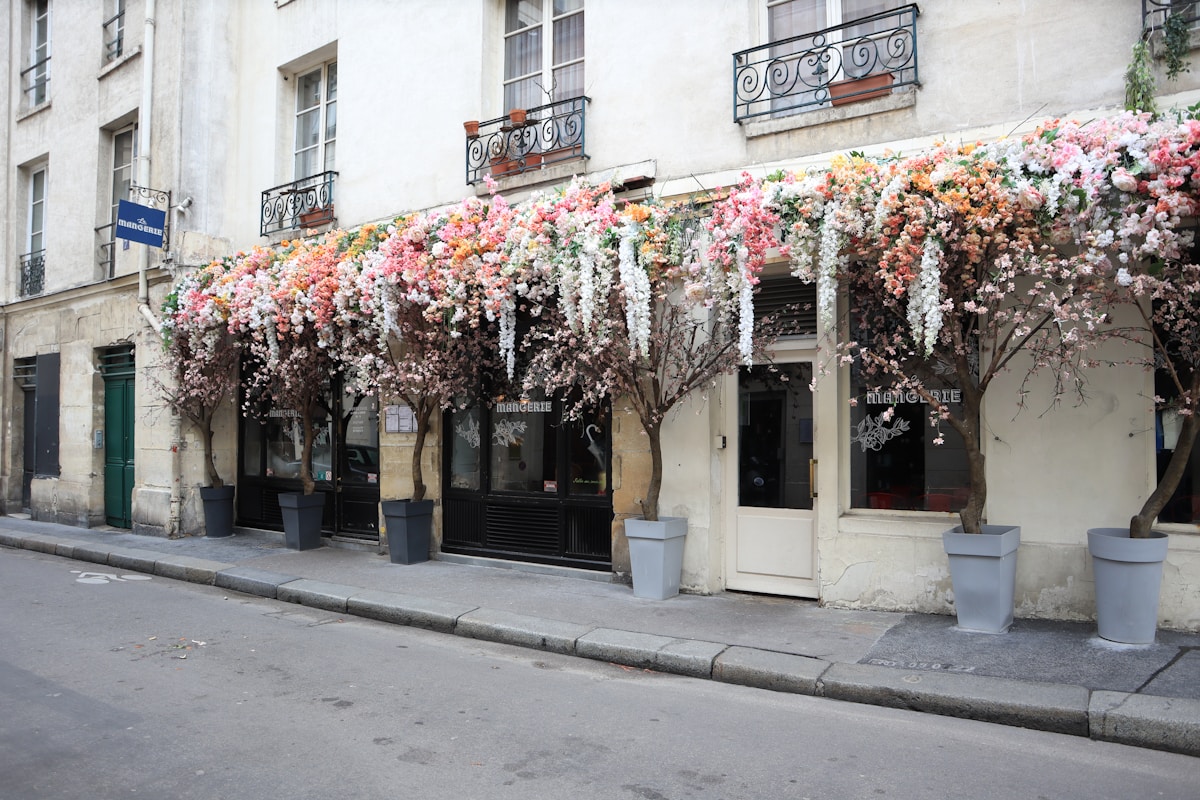
The 3rd and 4th Arrondissements, encompassing the historic Marais District and the iconic Île de la Cité, offer a fascinating blend of medieval charm and architectural splendor.
The Marais is renowned for its maze-like streets and preserved buildings, while the Île de la Cité houses the majestic Notre Dame Cathedral and serves as one of the central islands of Paris.
Together, these neighborhoods provide a rich tapestry of history and culture that is quintessential to the Parisian experience.
The Marais’ Twisty Roads and Historic Buildings
Exploring the labyrinthine streets and historic structures of the Marais District and Île de la Cité reveals the rich cultural tapestry of Central Paris’ 3rd and 4th Arrondissements.
- The Marais’ twisty roads and historic buildings: A must-experience place to visit in Paris.
- Prettiest street in Paris: Rue des Rosiers.
- Best neighborhood in Paris: Vibrant and diverse.
- Bohemian neighborhood Paris: Artistic and eclectic.
Notre Dame Cathedral and the Two Islands of Paris
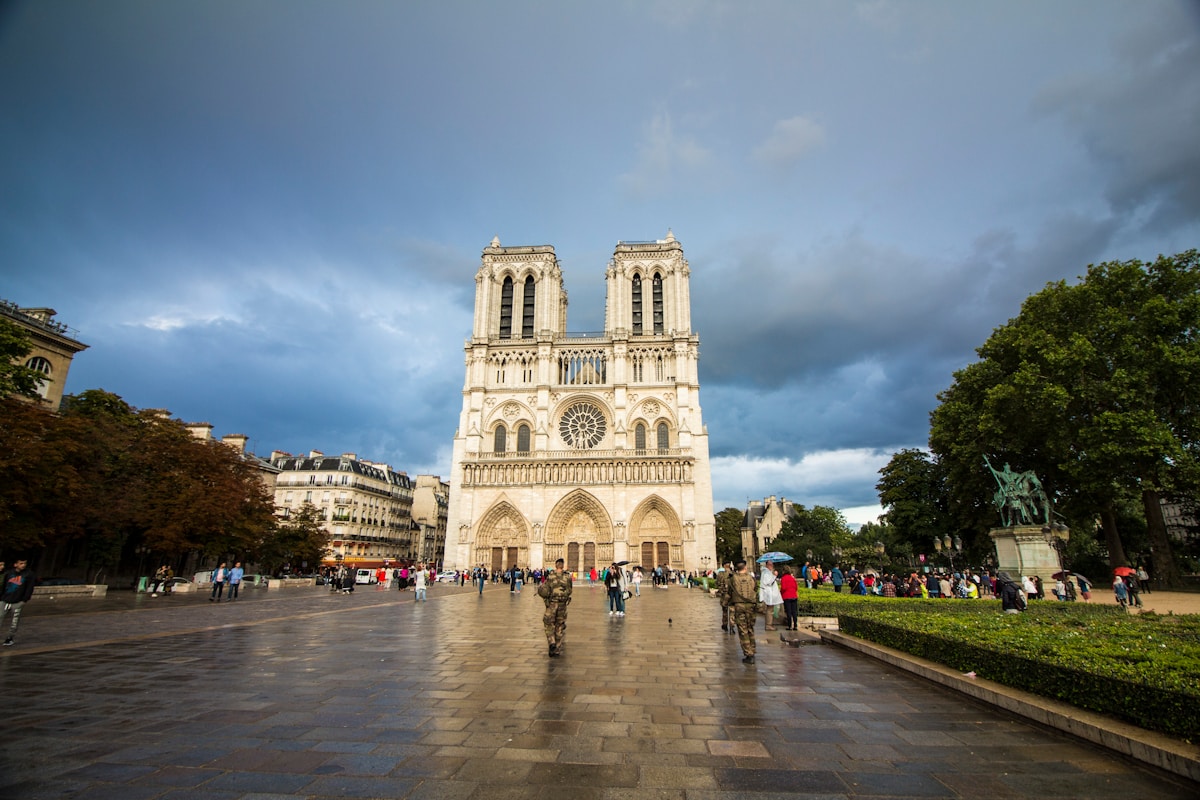
Dominating the Île de la Cité with its awe-inspiring Gothic architecture, the Notre Dame Cathedral stands as an iconic symbol of Paris’ rich history and cultural heritage.
The cathedral, alongside the two islands of Paris, Île de la Cité and Île Saint-Louis, are among the best places to visit in Paris.
These coolest places in Paris are also prime neighborhoods to stay in Paris.
Left Bank Arrondissements
The Left Bank of Paris is a treasure trove of historical and cultural wonders, anchored by the vibrant 5th and 6th Arrondissements, home to the iconic Latin Quarter and the elegant Saint-Germain-des-Prés.
Just a stone’s throw away, the 7th Arrondissement boasts the world-renowned Eiffel Tower and an array of charming hotels with Eiffel Tower view that epitomize Parisian luxury.
These neighborhoods offer a fascinating blend of intellectual heritage, architectural beauty, and modern sophistication.
5th and 6th Arrondissements: The Latin Quarter and Saint-Germain-des-Prés
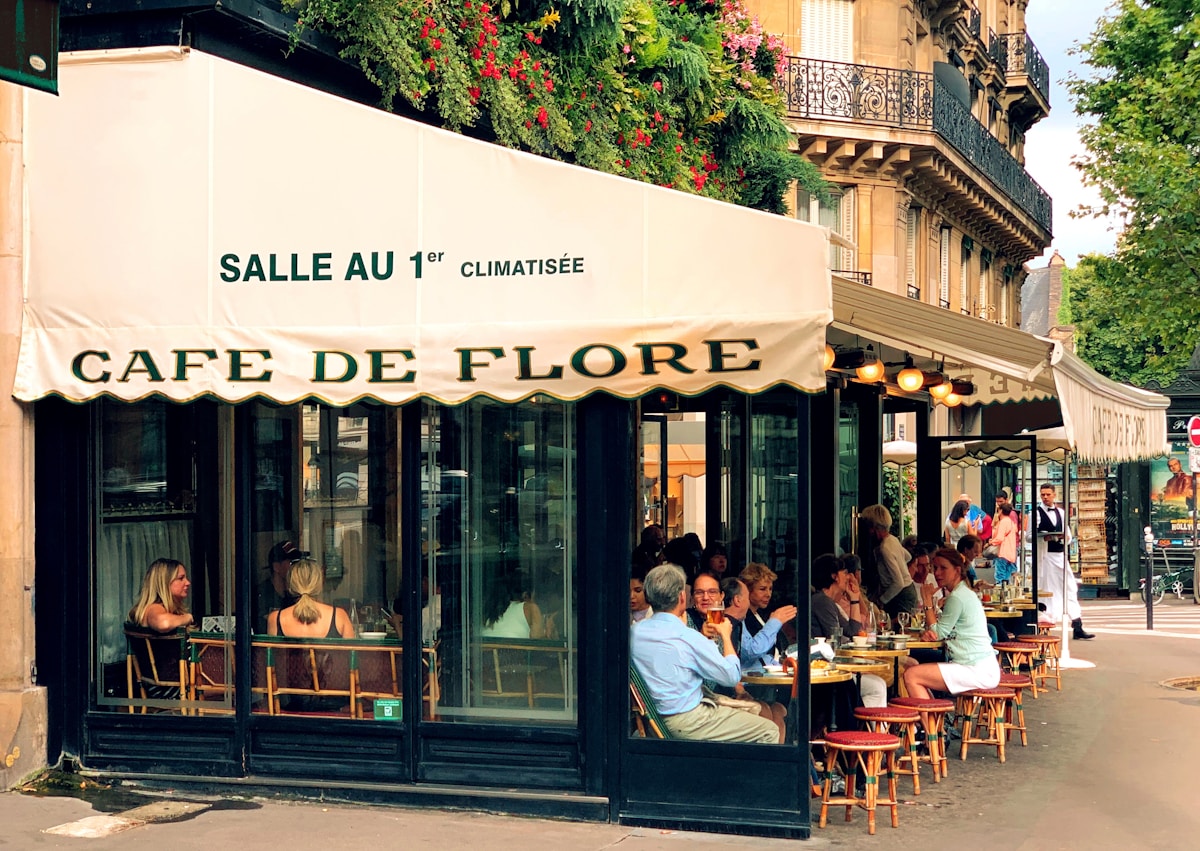
The 5th and 6th Arrondissements, encompassing the vibrant Latin Quarter and the elegant Saint-Germain-des-Prés, offer a rich tapestry of academic prestige and luxurious living.
Anchored by the historic Sorbonne University, the Latin Quarter is a hub of intellectual activity and cultural landmarks.
In contrast, Saint-Germain-des-Prés is synonymous with upscale boutiques, charming cafés, and a sophisticated ambiance, making it a magnet for both locals and visitors seeking a blend of history and modernity.
Home to the Sorbonne and Luxurious Living
Nestled along the Left Bank of the Seine, the 5th and 6th Arrondissements of Paris, known respectively as the Latin Quarter and Saint-Germain-des-Prés, offer a harmonious blend of academic prestige and opulent living.
- Sorbonne: A beacon of intellectual rigor.
- Luxurious Living: Upscale boutiques and fine dining.
- Paris Neighborhoods: Historic yet vibrant.
- Best Area to Stay in Paris: Perfect for both culture and comfort.
7th Arrondissement: The Eiffel Tower and Charming Hotels
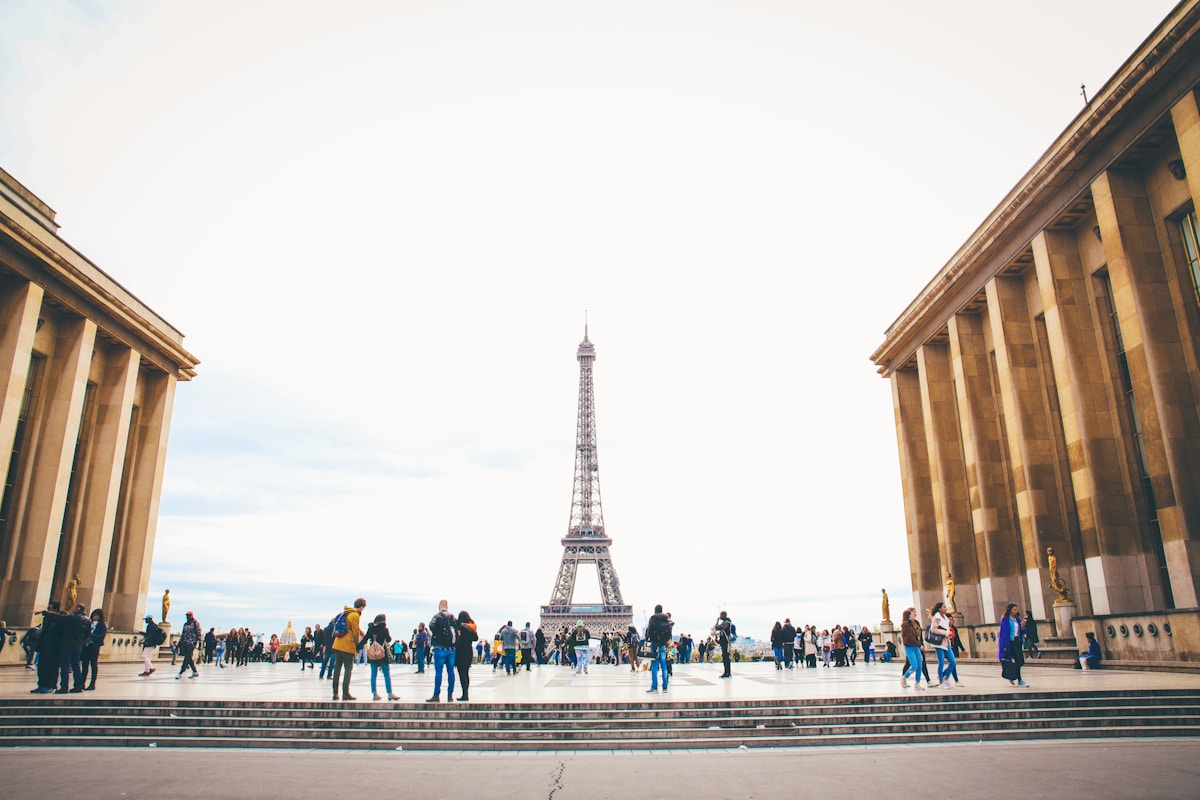
The 7th Arrondissement, home to the iconic Eiffel Tower, offers a blend of historical allure and modern comfort, epitomized by its charming hotels.
Strolling along Rue Cler and Rue St. Dominique, visitors encounter quaint cafes and bustling markets that capture the essence of Parisian life.
Nearby, the d’Orsay Museum beckons with its impressive collection of Impressionist art, making this neighborhood a cultural treasure trove.
Rue Cler, Rue St. Dominique, and the d’Orsay Museum
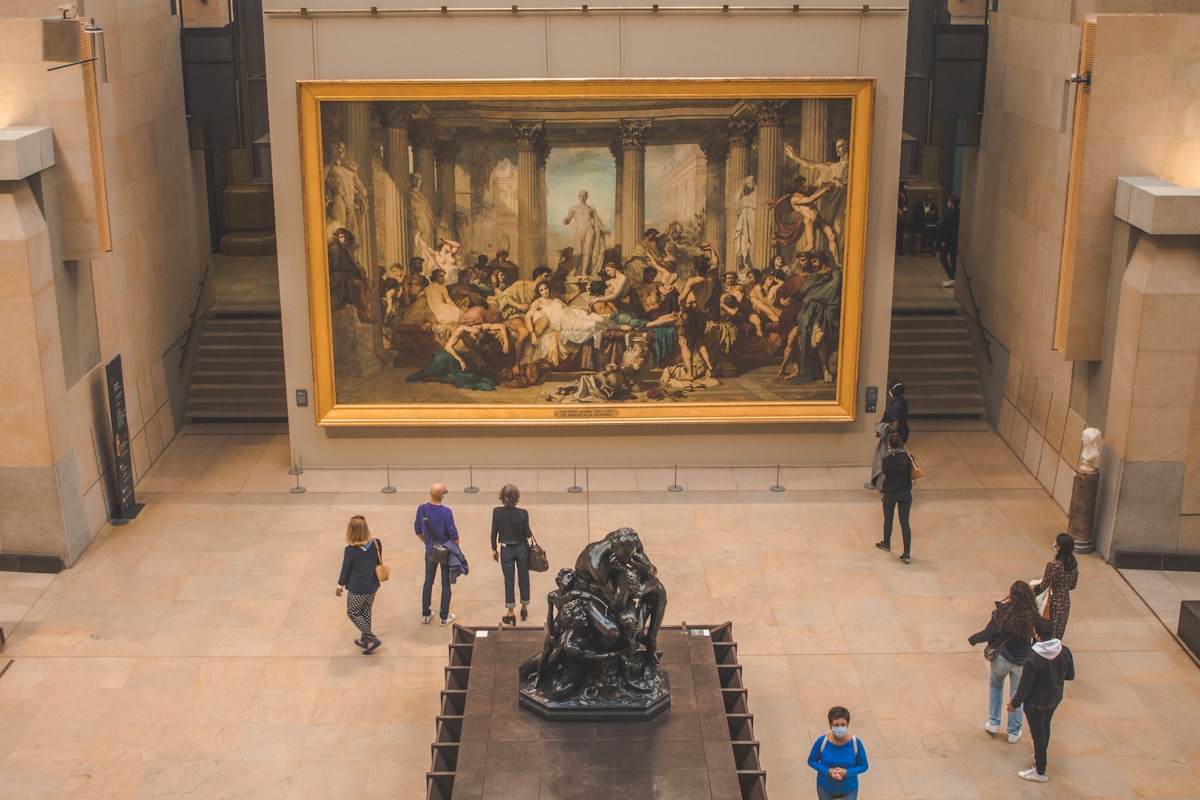
Wandering through the charming streets of Rue Cler and Rue St. Dominique offers an enchanting glimpse into Parisian life, culminating in a visit to the renowned d’Orsay Museum.
Nestled among the best Paris neighborhoods, these cool places in Paris are perfect for:
- Cafés and Bistros: Experience authentic French cuisine.
- Boutique Shopping: Discover unique finds.
- Art: Marvel at Impressionist masterpieces.
- Architecture: Admire historic buildings.
Paris Neighborhoods: Right Bank Arrondissements
Turning our attention to the Right Bank, the 8th Arrondissement dazzles visitors with the iconic Champs Elysées and its array of luxurious hotels.
Meanwhile, the 9th Arrondissement captivates with its grand department stores and the architectural splendor of the Palais Garnier Opera House.
Together, these neighborhoods offer a blend of opulence, culture, and history that epitomizes the allure of Paris.
8th Arrondissement: Champs Elysées and World-Class Hotels
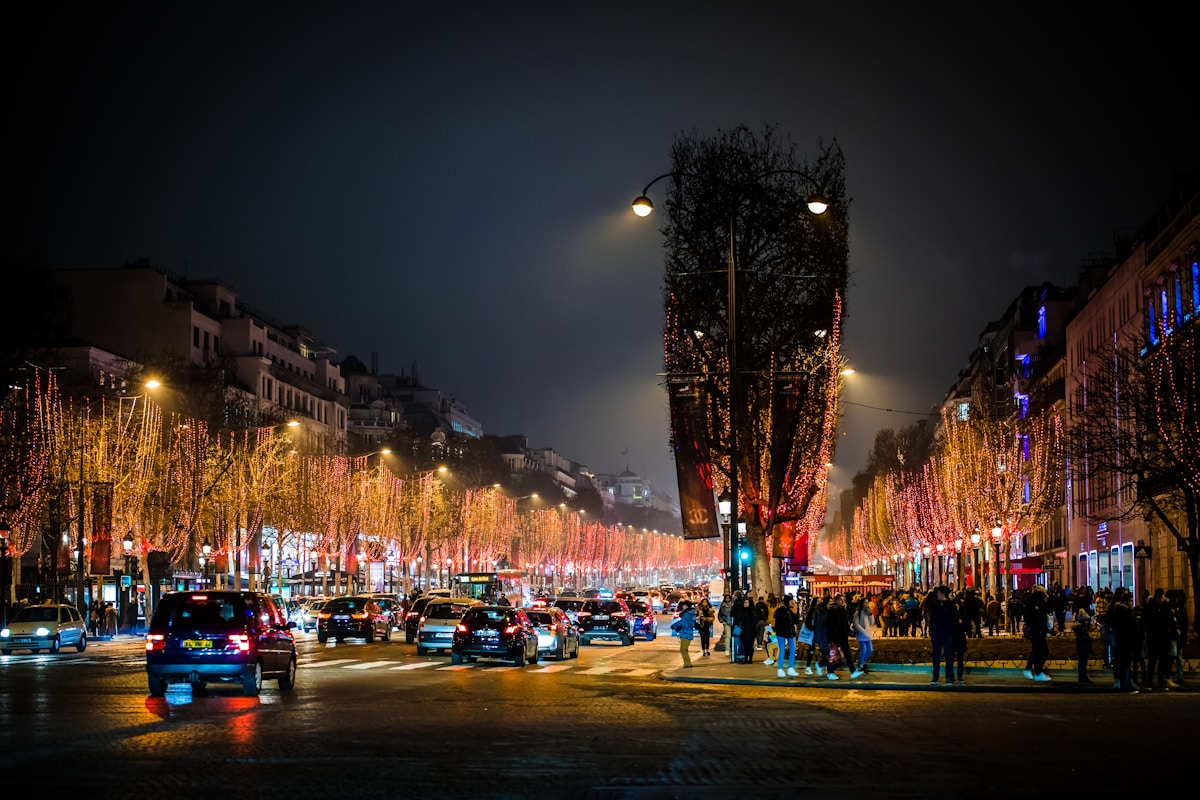
In the heart of Paris’ prestigious Right Bank, the 8th Arrondissement is famed for its iconic Champs Elysées and its luxurious accommodations.
Among the most distinguished are the Four Seasons George V, Plaza Athénée, and Royal Monceau Hotel, each offering opulent amenities and unparalleled service.
These world-class establishments epitomize the elegance and charm that define this illustrious area.
The Four Seasons George V, Plaza Athenée, and Royal Monceau Hotel
Nestled in the heart of the Right Bank’s prestigious 8th arrondissement, the Four Seasons George V, Plaza Athénée, and Royal Monceau Hotel epitomize the pinnacle of luxury and elegance, drawing visitors to the iconic Champs Elysées.
For those planning to visit Paris, these hotels are located in:
- The best area to stay in Paris for tourists
- The safest neighborhoods in Paris
- The best neighborhood Paris
- The ideal area of Paris to stay in
9th Arrondissement: Grand Magasins and the Palais Garnier Opera House
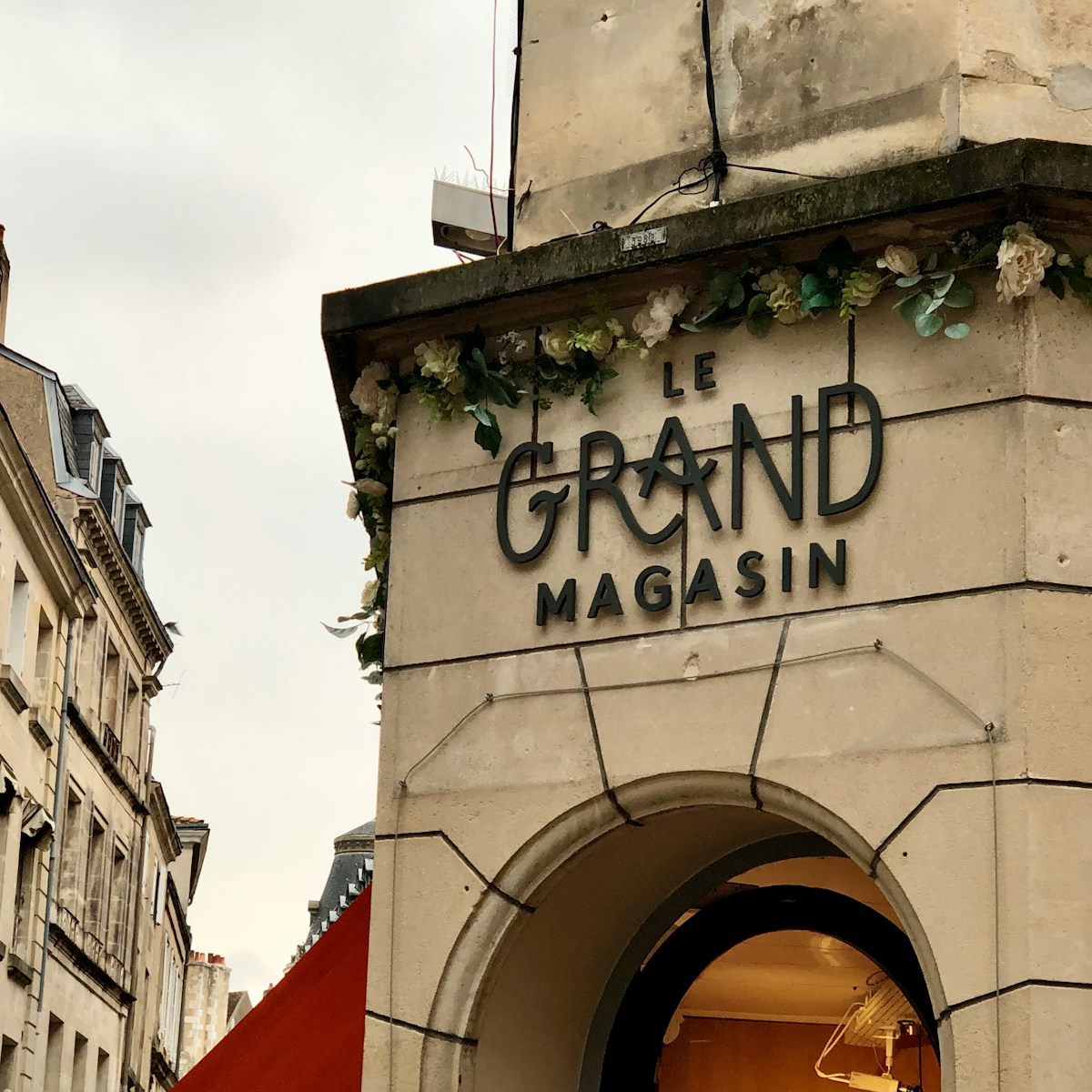
The 9th Arrondissement of Paris is a vibrant blend of culture and commerce, anchored by the iconic Grand Magasins and the stunning Palais Garnier Opera House.
Shoppers flock to the renowned Printemps and Galeries Lafayette department stores, both celebrated for their opulent interiors and extensive selections.
Meanwhile, the architectural splendor of the Palais Garnier offers a fascinating glimpse into Paris’s rich artistic heritage.
Printemps and Galeries Lafayette Department Stores
Amidst the bustling Right Bank, the iconic Printemps and Galeries Lafayette department stores stand as paragons of Parisian retail luxury, drawing both locals and tourists to their opulent halls.
Shopping in Paris at these department stores offers:
- Architectural Splendor: Marvel at stunning Art Nouveau and Art Deco designs.
- Exclusive Brands: Access to world-renowned fashion labels.
- Panoramic Views: Rooftop terraces with city vistas.
- Gourmet Delights: Exceptional dining experiences within.
Paris Neighborhoods: Eastern Arrondissements
The Eastern Arrondissements of Paris present an enchanting blend of modern vibrancy and authentic charm.
The 10th, 11th, and 12th arrondissements are rapidly emerging as dynamic neighborhoods, while the 13th, 14th, and 15th boast some of the city’s most cherished boulangeries and patisseries.
Together, they offer a unique glimpse into both the evolving and traditional facets of Parisian life.
10th, 11th, and 12th Arrondissements: Up-and-Coming Neighborhoods
The eastern arrondissements of Paris, particularly the 10th, 11th, and 12th, are gaining popularity for their vibrant atmosphere and cultural offerings.
Canal St. Martin provides a picturesque setting for leisurely strolls, while the array of trendy restaurants showcases the city’s evolving culinary scene.
The Bastille area, known for its historical significance, now pulses with contemporary energy, making these neighborhoods a must-visit for both locals and tourists.
Canal St. Martin, Trendy Restaurants, and the Bastille
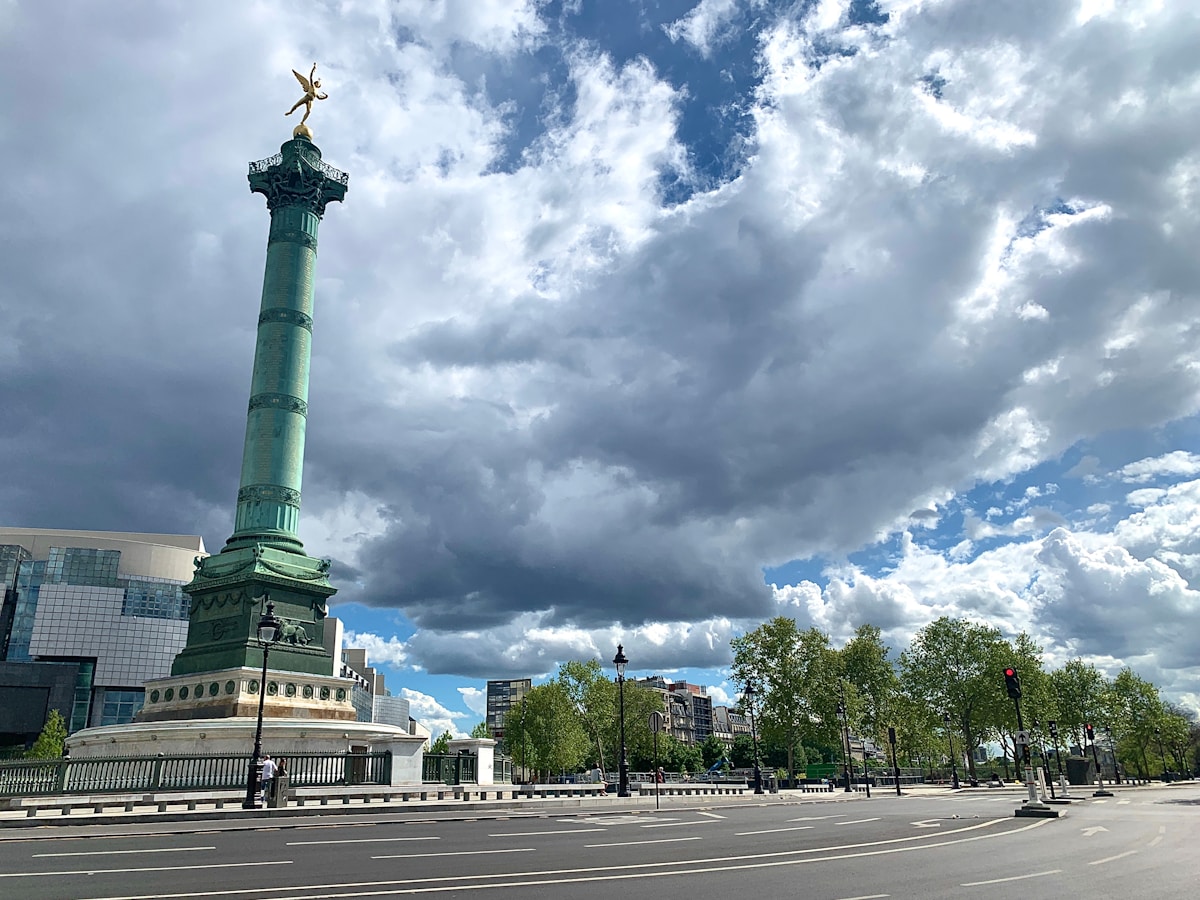
Nestled in the heart of Paris’s eastern arrondissements, Canal St. Martin, along with its trendy restaurants and the historic Bastille, offers a vibrant glimpse into the city’s up-and-coming neighborhoods.
This bohemian neighborhood is among the best neighborhoods in Paris for several reasons:
- Picturesque waterways of Canal St. Martin
- Eclectic mix of trendy restaurants
- Historic allure of the Bastille
- Lively arts and culture scene
13th, 14th, and 15th Arrondissements: Authentic Boulangeries and Patisseries
The 15th Arrondissement, known for its authentic charm, offers a delightful journey through Parisian culinary traditions.
This area boasts a plethora of renowned boulangeries and patisseries, where the aroma of freshly baked bread and delicate pastries fills the air.
Visitors can experience the quintessential Parisian lifestyle while savoring artisanal treats crafted by skilled bakers and pastry chefs.
The 15th Arrondissement’s Authentic Charm
Amid the vibrant tapestry of Paris, the 15th Arrondissement stands out for its authentic charm, characterized by its quaint streets and an abundance of traditional boulangeries and patisseries.
The 15th Arrondissement is a local favorite for its community feel, making it one of the best neighborhoods in Paris to live.
For tourists, it offers a genuine Parisian experience, establishing itself as the best area to stay in Paris.
Nestled in the southwestern region, it blends residential tranquility with urban vibrancy.
Paris Neighborhoods: Western Arrondissements
The Western Arrondissements of Paris offer a fascinating blend of opulence and cultural richness.
From the affluent 16th and 17th Arrondissements, known for their luxurious lifestyle and grand architecture, to the bohemian charm of Montmartre in the 18th, each area presents its unique allure.
Further east, the 19th and 20th Arrondissements, including Belleville and the picturesque canals, provide a vibrant and eclectic atmosphere that stands in stark contrast to the wealthier western districts.
16th and 17th Arrondissements: Wealthy Neighborhoods and Luxurious Living
The 16th and 17th Arrondissements of Paris epitomize opulence and grandeur, boasting some of the city’s most affluent neighborhoods.
Passy, located within the 16th, combines a village-like charm with high-end amenities, offering an exclusive residential experience.
As two of the largest arrondissements, they provide a harmonious blend of historical elegance and modern luxury, making them coveted areas for discerning residents and visitors alike.
The Passy Neighborhood and the Largest Arrondissements
Nestled in the heart of Paris’s affluent western districts, the Passy neighborhood alongside the expansive 16th and 17th arrondissements epitomizes luxury and sophisticated living.
Here, you’ll discover:
- Passy neighborhood: One of the best neighborhoods to live in Paris.
- Largest arrondissements in Paris: Spacious and elegant.
- Suburbs of Paris: Peaceful yet vibrant.
- Prettiest streets in Paris: Picturesque and charming.
18th Arrondissement: Montmartre’s Bohemian Enclave
Nestled within the 18th Arrondissement, Montmartre stands as a storied enclave that has long attracted artists, musicians, and writers.
This bohemian neighborhood, famed for its vibrant arts scene and historic charm, has served as a muse to luminaries like Picasso, Toulouse-Lautrec, and Van Gogh.
Today, Montmartre continues to be a haven for creative souls, fostering a dynamic cultural landscape amidst its picturesque streets and iconic landmarks.
Artists, Musicians, and Writers-in-Residence
Montmartre, known for its artistic legacy and bohemian charm, has long been a haven for artists, musicians, and writers seeking inspiration.
For those pondering, ‘is Montmartre a good place to stay in Paris?’ consider its rich cultural heritage:
- Historic Studios: Former homes of Picasso and Van Gogh.
- Vibrant Music Scene: Cafés and cabarets.
- Literary Salons: Frequented by Hemingway.
- Art Markets: Bustling with creativity.
19th and 20th Arrondissements: Belleville and the Canals
Nestled in the northeastern part of Paris, the 19th and 20th arrondissements offer a unique blend of urban charm and cultural richness.
Belleville, with its vibrant street art and diverse culinary scene, presents an eclectic mix of traditions and modernity.
The serene canals, particularly the Canal Saint-Martin, provide picturesque pathways perfect for leisurely strolls and an escape from the city’s hustle.
A Bit Off the Beaten Path, but Worth Exploring
Among the lesser-known yet enchanting areas to explore in Paris are the Western arrondissements, Belleville, and the picturesque canals of the 19th and 20th arrondissements.
These vibrant locales offer:
- Eclectic street art in Belleville.
- Charming waterways along Canal Saint-Martin.
- Hidden gardens in Parc des Buttes-Chaumont.
- Authentic local markets around Rue de Belleville.
Discover these vibrant, offbeat gems.
Exploring the Charm of Parisian Districts
Parisian districts offer an unparalleled tapestry of experiences, each exuding its unique charm.
From the bohemian art scene of Montmartre to the historic and cultural richness of Le Marais, every corner of the city tells a story.
Whether it’s the intellectual allure of Saint-Germain-des-Prés or the vibrant student atmosphere of the Latin Quarter, and even the trendy appeal of Canal Saint-Martin, these neighborhoods invite exploration and discovery.
Montmartre: The Artistic Heart of Paris
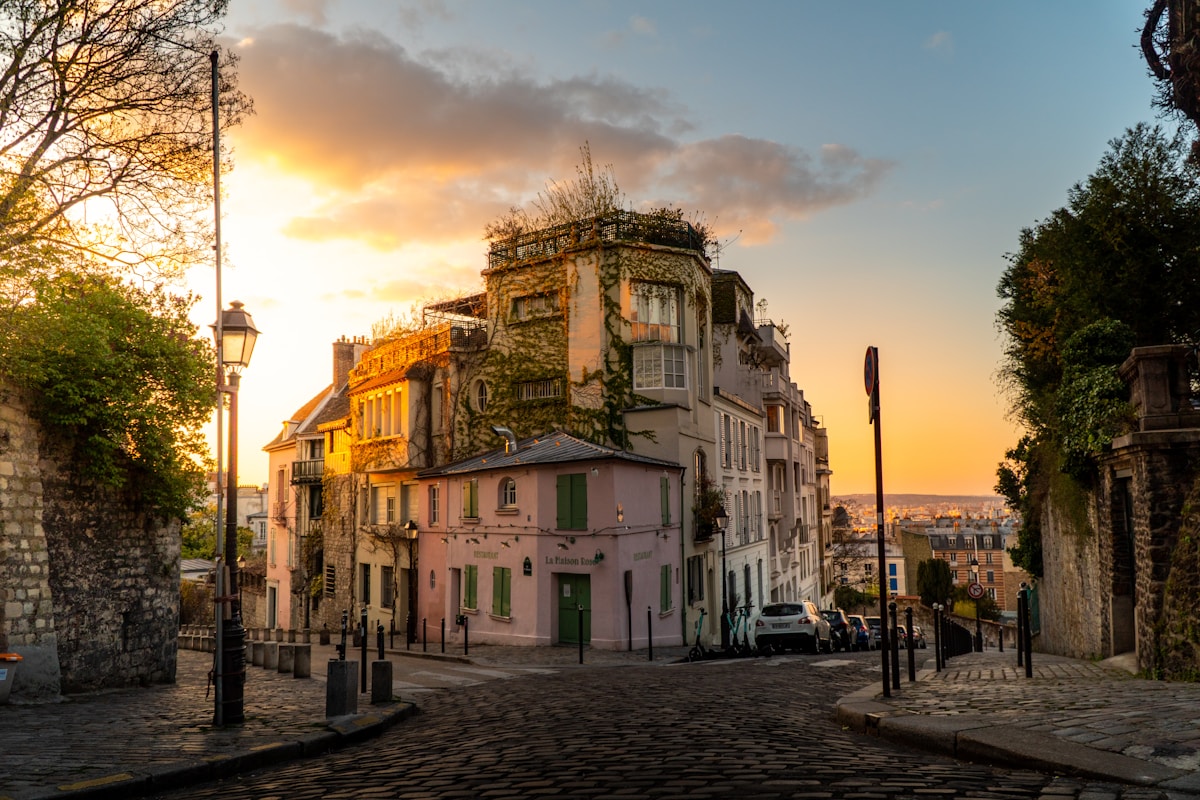
Montmartre stands as a tribute to Paris’s rich artistic legacy and cultural influence, having nurtured the spirits of renowned artists like Picasso and Van Gogh.
This historic district, perched atop a hill, offers a plethora of must-see attractions, from the iconic Sacré-Cœur Basilica to the charming Place du Tertre.
Exploring Montmartre reveals a unique blend of historical significance and vibrant local life, making it a quintessential Parisian experience.
Historical Significance and Cultural Influence
Nestled atop a hill in the 18th arrondissement, the vibrant district of Montmartre stands as a tribute to Paris’s rich artistic heritage and enduring cultural allure.
Its historical significance can be seen in:
- Bohemian roots: Once home to iconic artists like Picasso and Van Gogh.
- Cultural enclaves: Bustling cabarets and cafés.
- Architectural marvels: Stunning 19th-century buildings.
- Inspiring vistas: Panoramic views of Paris.
Must-See Attractions in Montmartre
Among the myriad attractions that beckon visitors to Montmartre, the Basilica of the Sacré-Cœur stands out as a breathtaking architectural gem with its iconic white domes gracing the Parisian skyline.
Montmartre’s appeal extends beyond, with its quaint streets, vibrant art scene, and historical charm.
| Attraction | Description |
|---|---|
| Basilica of Sacré-Cœur | Stunning architecture with panoramic views |
| Place du Tertre | Bohemian square with artists and cafes |
| Moulin Rouge | Legendary cabaret and entertainment spot |
| Musée de Montmartre | Museum showcasing Montmartre’s history |
Le Marais: A Fusion of Culture and History
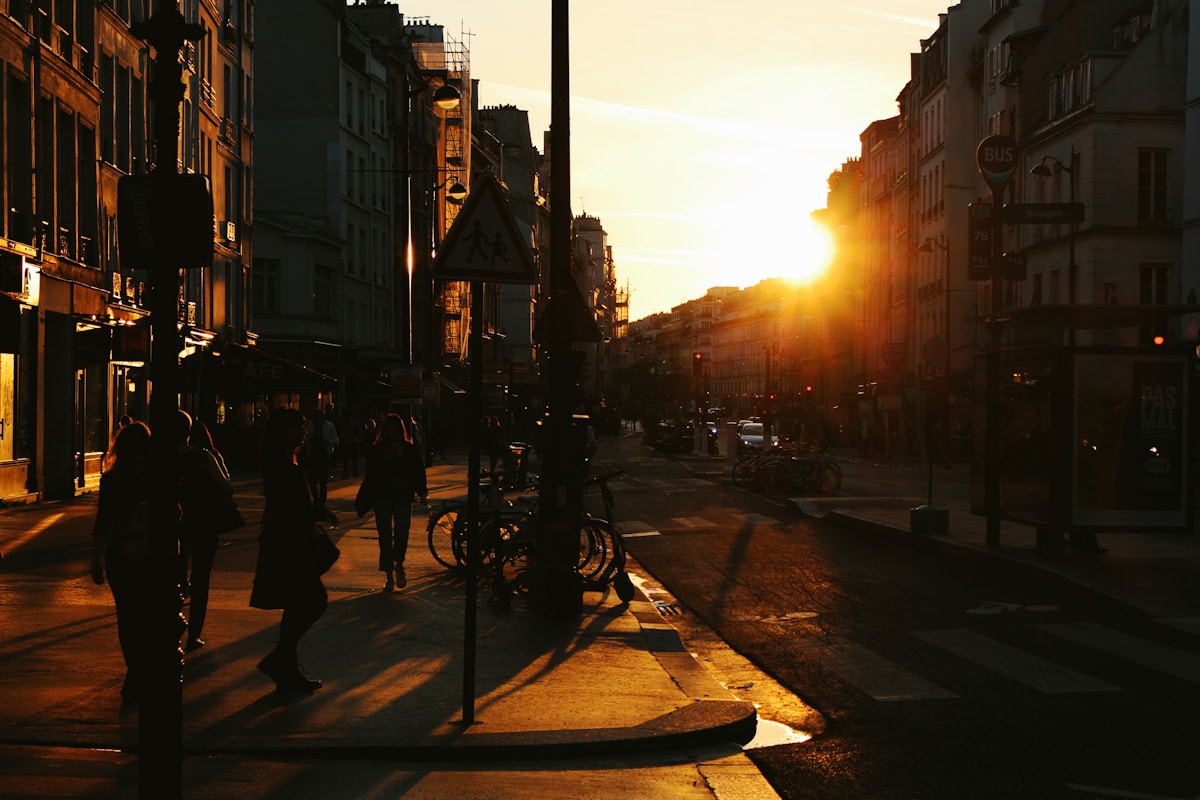
Le Marais stands as a tribute to Paris’s rich tapestry of culture and history, boasting unique architecture and historic landmarks that transport visitors back in time.
This vibrant district also offers an eclectic mix of shopping and dining options, from chic boutiques to traditional Parisian cafés.
Exploring Le Marais provides an enchanting blend of the old and the new, making it a must-visit for anyone seeking to experience the true essence of Paris.
Unique Architecture and Historic Landmarks
Rich in cultural heritage and historical significance, the Marais district of Paris boasts an enchanting blend of unique architecture and timeless landmarks.
Key highlights include:
- Place des Vosges – the oldest planned square in Paris.
- Hôtel de Ville – the stunning city hall.
- Musée Carnavalet – dedicated to Parisian history.
- Saint-Paul-Saint-Louis Church – a Baroque masterpiece.
Shopping and Dining in Le Marais
After immersing yourself in the architectural splendor and historical landmarks of the Marais district, it’s time to explore the vibrant shopping and dining scene that adds to the neighborhood’s irresistible charm.
Wander through Rue des Francs-Bourgeois for eclectic boutiques and luxury shops, then indulge in culinary delights at renowned eateries like Breizh Café and L’As du Fallafel, offering a feast for your senses and soul.
Saint-Germain-des-Prés: The Intellectual Hub
Nestled in the heart of Paris, Saint-Germain-des-Prés stands as a beacon of intellectual and cultural vibrancy, its streets lined with legendary cafés that once buzzed with the conversations of literary giants like Sartre and de Beauvoir.
Beyond its storied literary heritage, the neighborhood boasts an array of art galleries and chic boutiques, offering a blend of classic and contemporary aesthetics.
This district’s allure is further enhanced by its commitment to preserving the essence of Parisian charm, making it a must-visit for those seeking an immersive cultural experience.
Literary Legacy and Famous Cafés
Saint-Germain-des-Prés, often celebrated as the intellectual heart of Paris, boasts a storied legacy of literary giants and iconic cafés that have inspired countless works of art and thought.
Key sites include:
- Café de Flore – A historic meeting place for existentialists.
- Les Deux Magots – Frequented by Hemingway and Sartre.
- Brasserie Lipp – A hub for political discussions.
- Le Procope – Paris’s oldest café, hosting Voltaire and Rousseau.
Art Galleries and Boutiques to Explore
A treasure trove of art galleries and chic boutiques awaits visitors in Saint-Germain-des-Prés, offering a glimpse into the district’s vibrant artistic and commercial life.
Renowned for its eclectic mix of contemporary and classic art, the area is also home to unique fashion stores, independent bookshops, and artisanal crafts.
This makes it a haven for those seeking both cultural enrichment and retail therapy.
Latin Quarter: The Student Vibe and Heritage
The Latin Quarter, renowned for its youthful energy and historical richness, captivates visitors with the vibrant atmosphere of Rue Mouffetard, a bustling street lined with markets and cafes.
This dynamic neighborhood is also home to prestigious academic institutions like the Sorbonne, which have profoundly shaped its cultural and intellectual landscape.
Together, these elements create a unique blend of tradition and modernity, making the Latin Quarter a fascinating district to explore.
The Excitement of Rue Mouffetard
Nestled in the heart of the Latin Quarter, Rue Mouffetard offers an eclectic mix of vibrant street markets, historic architecture, and a lively student atmosphere that embodies the quintessential charm of Parisian life.
Here, visitors can experience:
- Fresh produce at bustling markets
- Timeless beauty of medieval buildings
- Cozy cafés buzzing with student chatter
- Artisan shops showcasing unique crafts
Embrace the freedom to explore Rue Mouffetard’s enchanting allure.
Academic Institutions and Their Influence
Stepping beyond the vibrant markets and historic charm of Rue Mouffetard, one can immediately sense the profound influence of academic institutions that shape the intellectual and cultural ambiance of the Latin Quarter.
Home to the prestigious Sorbonne University, this district thrives with scholarly energy, where ancient libraries, student cafes, and bookshops foster a spirit of curiosity and freedom.
This makes it a hub for lifelong learners and free thinkers.
Canal Saint-Martin: A Trendy Retreat
Canal Saint-Martin stands out with its picturesque waterways and iron footbridges, offering a serene escape within the bustling city.
This neighborhood is a favorite among locals for its eclectic mix of artisanal cafes and charming boutiques, creating a perfect blend of relaxation and indulgence.
Discover the essence of Parisian life as you explore the canal’s vibrant atmosphere and hidden culinary gems.
What Makes Canal Saint-Martin Unique
Amid the bustling heart of Paris, Canal Saint-Martin stands out as a vibrant enclave known for its picturesque waterways, eclectic boutiques, and lively café culture.
This district’s unique charm can be captured through:
- Historic iron footbridges offering scenic views.
- Street art that paints the neighborhood with vibrant colors.
- Independent bookstores catering to literary enthusiasts.
- Vintage shops providing unique finds and treasures.
Locals’ Favorite Spots for Food and Relaxation
Nestled along the serene waterways of Canal Saint-Martin, a variety of beloved eateries and tranquil spots offer locals a perfect blend of gastronomic delight and relaxation. From cozy cafes to vibrant bistros, the area is rich with culinary treasures.
| Eateries | Tranquil Spots |
|---|---|
| Ten Belles | Parc des Buttes-Chaumont |
| Le Comptoir Général | Quai de Jemmapes |
| Du Pain et des Idées | Jardin Villemin |
| La Marine | Place de la République |
The 16th Arrondissement: Elegance and Sophistication
The 16th Arrondissement stands as a tribute to Parisian elegance, offering an array of lush parks, esteemed museums, and family-friendly activities that cater to both residents and visitors.
This district also entices with its upscale shopping avenues and exquisite dining options, making it a prime destination for those seeking sophistication.
Whether you’re strolling through the verdant Bois de Boulogne or exploring the treasures of the Musée Marmottan Monet, the 16th promises a refined Parisian experience.
Parks, Museums, and Family-Friendly Activities
Home to a plethora of verdant parks, world-class museums, and engaging family-friendly activities, the 16th Arrondissement of Paris epitomizes elegance and sophistication. Visitors can enjoy:
- Bois de Boulogne: A vast park offering boating and picnicking.
- Musée Marmottan Monet: Home to an extensive Monet collection.
- Jardin d’Acclimatation: A delightful amusement park for children.
- Fondation Louis Vuitton: A striking modern art museum.
The Allure of Shopping and Dining in the 16th
Renowned for its upscale boutiques and gourmet restaurants, the 16th Arrondissement of Paris offers an exquisite shopping and dining experience that embodies the essence of Parisian luxury.
Stroll along Avenue Victor Hugo, where designer stores and chic cafés beckon, or indulge in a meal at Michelin-starred establishments.
This district seamlessly blends elegance and sophistication, catering to those who seek the finer things in life.
Belleville: The Emerging Cultural Melting Pot
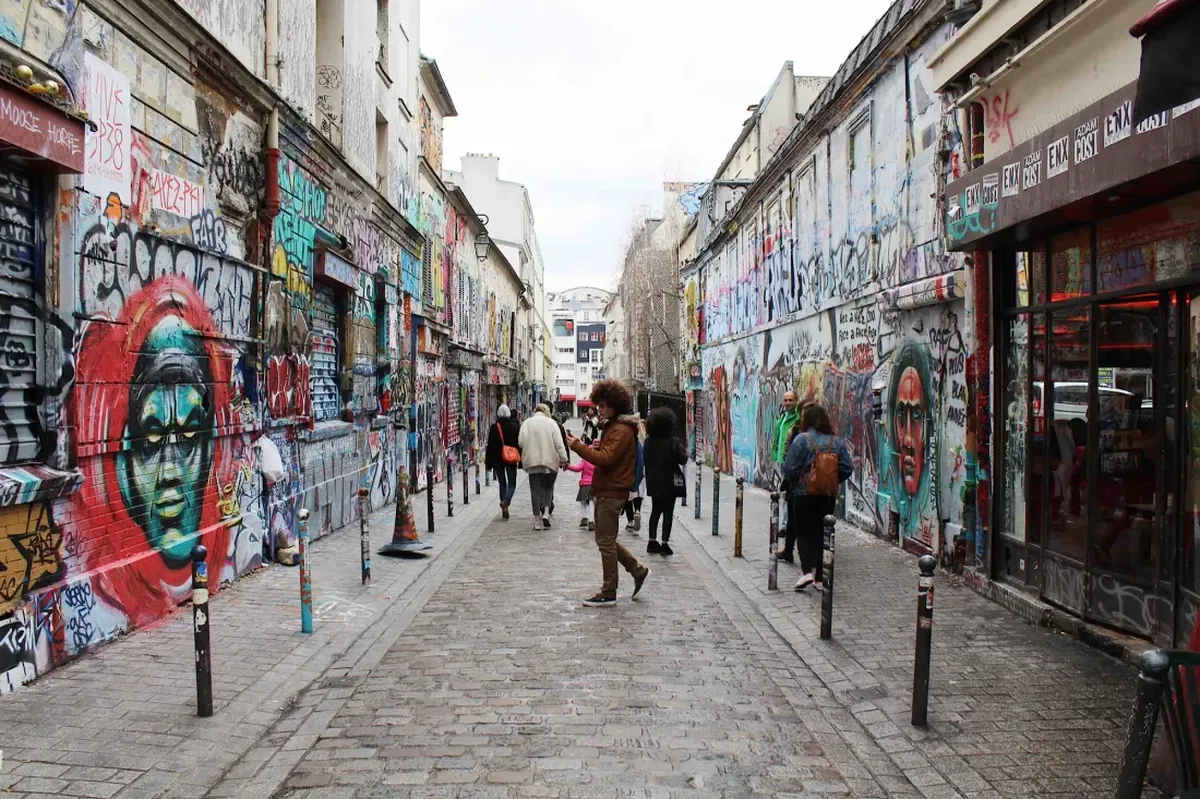
Belleville stands out as a vibrant tapestry of diverse communities, each contributing unique cultural threads to the district’s rich fabric.
The streets are adorned with dynamic street art, and the area buzzes with local events that reflect its multicultural essence.
This convergence of influences makes Belleville a compelling destination for those seeking an authentic and eclectic Parisian experience.
Diverse Communities and Their Influence on Culture
Nestled in the northeastern part of Paris, Belleville emerges as a vibrant cultural melting pot, where diverse communities converge to create a unique and dynamic neighborhood.
This fusion influences local culture through:
- Cuisine: Global flavors meld in Belleville’s eateries.
- Music: Eclectic sounds fill the streets.
- Art: Multicultural creativity thrives in galleries.
- Festivals: Celebrations reflect a mosaic of traditions.
This diversity enriches Belleville’s charm.
Street Art and Local Events in Belleville
A vibrant tapestry of street art adorns the walls of Belleville, transforming the neighborhood into an open-air gallery that captivates both residents and visitors alike.
This artistic haven is further enlivened by local events in Paris such as the annual Belleville Artists’ Open Studios, fostering a dynamic cultural scene.
Here, creativity thrives, celebrating the spirit of freedom and diversity that defines Belleville’s unique charm.
Choosing the Right Neighborhood for Your Stay
Choosing the right neighborhood for your stay in Paris involves balancing your lifestyle preferences, budget constraints, and personal interests.
Whether you are captivated by historic charm or modern vibrancy, each district offers unique experiences that cater to different tastes.
Additionally, evaluating the accessibility and public transport options in Paris can greatly enhance your overall Parisian adventure.
Factors to Consider: Lifestyle, Budget, and Interests
When selecting the ideal Parisian neighborhood for your stay, it’s important to take into account your lifestyle preferences, budget constraints, and personal interests to guarantee a memorable and enjoyable experience.
- Lifestyle: Choose a district that matches your daily activities and vibe.
- Budget: Align your choice with your financial plan.
- Interests: Focus on areas offering attractions you love.
- Amenities: Confirm the neighborhood has necessary conveniences.
Comparing Accessibility and Public Transport Options
Maneuvering the intricate web of Parisian neighborhoods requires a thorough understanding of the city’s extensive and efficient public transport system.
The Metro, RER trains, buses, and trams interconnect seamlessly, ensuring that each arrondissement is accessible.
Whether you stay in the bustling Marais or the serene Montmartre, the freedom to explore Paris’s diverse locales is enhanced by its unparalleled transport network.
Conclusion: Embracing the Local Vibe of Paris’ Neighborhoods
To summarize, while the iconic landmarks of Paris capture global admiration, venturing into its diverse neighborhoods reveals the city’s true essence.
Encouraging exploration beyond the well-trodden tourist paths allows for a more authentic Parisian experience, rich with local culture and charm.
Ultimately, discovering the perfect neighborhood for your stay enhances your connection with the city, making your visit uniquely memorable.
Encouraging Exploration Beyond the Tourist Spots
Venturing beyond the well-trodden paths of Paris reveals a tapestry of vibrant neighborhoods brimming with authentic charm and local culture.
To truly embrace the essence of Parisian life:
- Explore hidden cafés for a taste of local flavors.
- Wander through artisan shops to find unique crafts.
- Visit lesser-known museums for intimate art experiences.
- Stroll in community parks to observe daily Parisian life.
Final Thoughts on Finding Your Perfect Parisian Spot
How can one truly capture the essence of Paris if not by immersing themselves in the unique charm and local vibe of its diverse neighborhoods?
Each arrondissement offers a distinct flavor, from the artistic Marais to the bohemian Montmartre.




